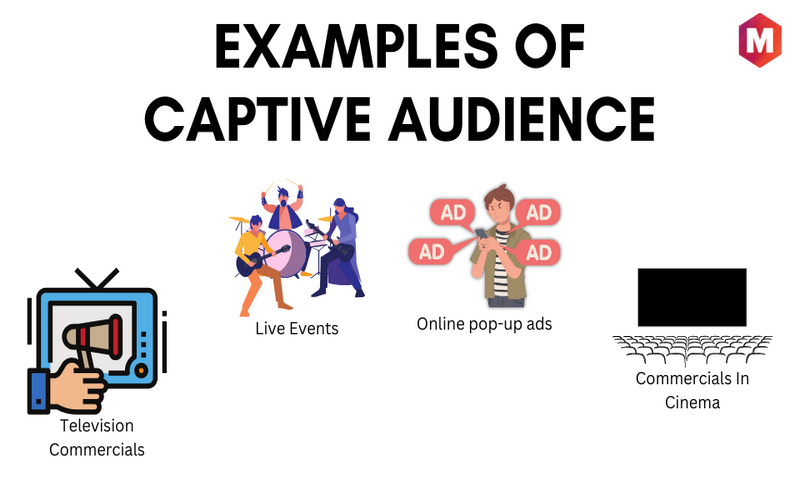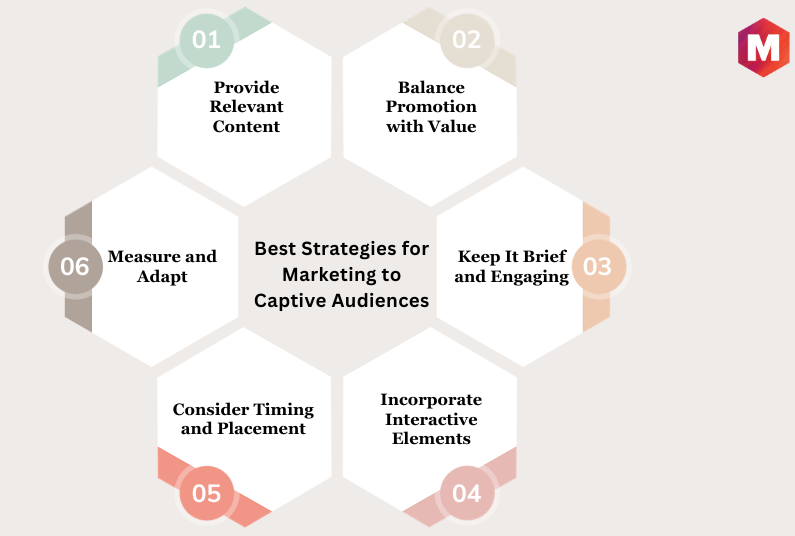In an age of endless media consumption, the concept of a captive audience has taken on a new significance. The ability to command the undivided attention of an audience has become a sought-after commodity in various sectors, from advertising to education, and beyond.
Table of Contents
What is a Captive Audience?
A captive audience is a group of individuals compelled to consume the content or advertisement because of the circumstances they are in, with no immediate option to avoid it.
For example, television commercials are designed to capture the attention of viewers during a show’s break. Advertisers carefully craft their messages to appeal to a captive audience who is unable to change the channel or fast forward through the content.
Similarly, public speakers work hard to engage and captivate their audience, whether it be in a conference room or an auditorium. The success of their message often relies on their ability to hold the attention of those listening.
Key Takeaways!
- A captive audience refers to individuals who are obligated to consume content due to their circumstances without immediate opportunity to avoid it.
- The captive audience concept is crucial for successful marketing strategies, especially in the advertising and public speaking sectors.
- Effective utilization of this concept can create a high-impact, memorable message that boosts brand recognition and loyalty.
Importance of Captive Audience
A Captive audience is important because targeting them can yield positive results for businesses and individuals alike. It allows for a concentrated delivery of a message or advertisement to a group that is forced to listen or watch. This strategy often results in a higher recall rate of the delivered information.
Some of the reasons behind the success of targeting captive audiences include:
- No distractions: Unlike other forms of media consumption where individuals have the option to skip or change the content, a captive audience is not able to switch their attention elsewhere. This undivided focus can lead to better retention and message recall.
- Forced exposure: With no option to avoid the content, individuals in a captive audience are forced to face the message or advertisement. This can be beneficial for businesses looking to raise brand awareness or individuals looking to convey a particular message.
- Limited competition: With a captive audience, there is often limited competition for attention compared to other forms of media consumption. This allows for a higher likelihood of successfully delivering the intended message.
Examples
The use of captive audience targeting can be seen in various forms, including:
- Television commercials: TV shows often have a captive audience as viewers are forced to watch the advertisements between segments.
- Live events: Attendees at live events such as concerts or sports games are typically considered a captive audience due to their limited options for entertainment during breaks or intermissions.
- Online pop-up ads: While not as effective as other forms of captive audience targeting, online pop-up ads are designed to capture the attention of individuals while they are forced to wait for a webpage to load or complete an action.
- Commercials in cinema halls: Moviegoers are a captive audience as they have no option to skip or avoid the commercials shown before the film begins. This makes it an effective form of advertising for businesses looking to reach a diverse and captive audience.
Best Strategies for Marketing to Captive Audiences
- Provide Relevant Content: When marketing to a captive audience, ensure that the content is relevant to the demographic. Irrelevant content can lead to disengagement and potential resentment towards the brand.
- Balance Promotion with Value: While selling is the ultimate goal, it’s important to balance promotional content with value. This can be achieved by providing information or entertainment that the audience finds useful or enjoyable.
- Keep It Brief and Engaging: Captive audiences often have a limited timeframe to absorb your message, so keep it brief, concise, and visually appealing. Too much information can quickly lead to boredom and disengagement.
- Incorporate Interactive Elements: When possible, incorporate interactive elements such as quizzes, games, or surveys. This can increase audience engagement and retention of the message.
- Consider Timing and Placement: The timing and placement of your marketing are crucial. For instance, cinema commercials should ideally be shown just before the movie starts, when the audience is settled and attentive.
- Measure and Adapt: Regularly measure the impact of your marketing efforts and adapt your strategy based on feedback and results. This can help improve the effectiveness of your campaigns in the long run.
Captive Audience vs. Non-captive Audience
A captive audience refers to a group of people who are not able to leave or change the environment in which they are exposed to advertising. They may be physically confined, such as passengers on a plane, or mentally engaged and focused on an activity, like attendees at a conference.
On the other hand, non-captive audiences have the freedom to ignore or leave the marketing message at any time. For example, people browsing the internet can easily click away from an advertisement they are not interested in.
How to Captivate Your Audiences with Incredible Content?
- Understand Your Audience: Get to know the preferences, needs, and interests of your audience. This will help in creating content that resonates with them and holds their attention.
- Create Engaging and Relevant Content: Your content should not only be interesting but also relevant to the audience’s needs or interests. This increases the likelihood of them paying attention and engaging with your message.
- Use Visuals: Incorporate graphics, videos, and images to make your content more appealing and easy to digest. Visual content can be extremely effective in capturing attention.
- Consistent Messaging: Ensure your content is consistent across different platforms and mediums. This helps in building a strong and recognizable brand.
- Create a Narrative: Stories are powerful tools for capturing an audience’s attention. Consider creating a narrative around your brand or product that can connect with your audience on an emotional level.
Conclusion!
To truly captivate your audience, it’s essential to understand their needs, create engaging and relevant content, and weave a compelling narrative.
Remember, consistency is key to building a recognizable brand, and using visuals can significantly enhance your message’s appeal. Mastering these strategies will help you effectively captivate captive audiences, thereby maximizing the impact of your marketing efforts.
FAQs
1. What is the meaning of a “captive audience” in content marketing?
A captive audience refers to a situation where readers or viewers are compelled to read or watch your content because of its high relevance and engaging nature. This means that they are more likely to pay attention and be influenced by your message.
2. How can I create engaging content for a captive audience?
To create engaging content, you should focus on understanding your audience’s needs and interests. Use visuals, tell compelling stories, and maintain consistency in your messaging across different platforms. This will help capture the attention of your audience and keep them engaged.
3. Can visuals make a difference in capturing the attention of a captive audience?
Yes, using visuals such as images, videos, and infographics can significantly enhance the appeal of your content and make it more engaging for a captive audience. Visuals have the power to convey information quickly and emotionally, making them an essential tool in capturing the attention of your audience.
Liked this post? Check out the complete series on Advertising

